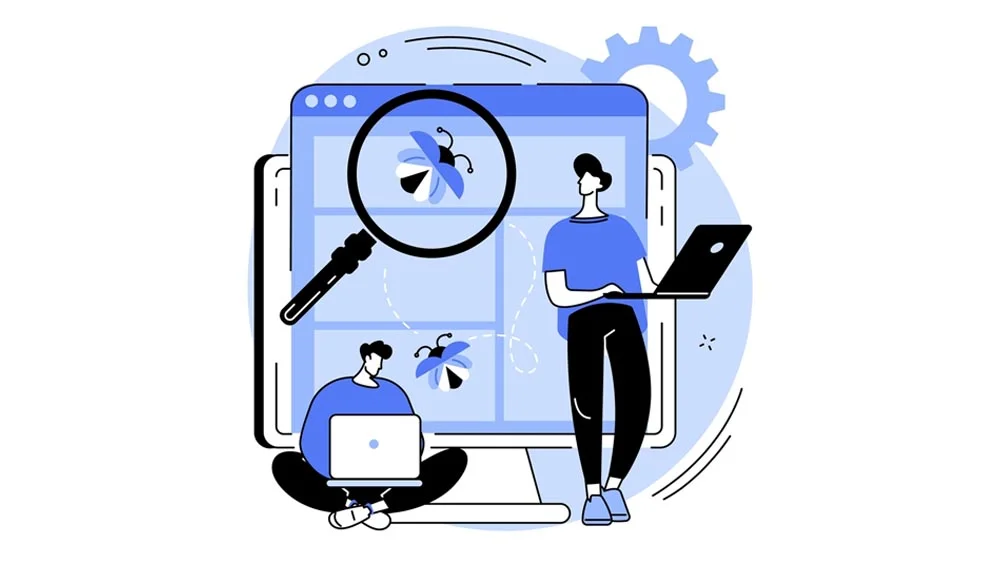Before the advent of remote app development, teams faced a myriad of challenges. Time zone differences and language barriers often led to communication breakdowns, while geographical distances hindered collaboration and project management. Technical hurdles such as infrastructure and security issues further complicate the process.
Cultural differences influenced work practices, making it difficult to establish a cohesive workflow. Tracking productivity and ensuring quality assurance were also significant pain points. Additionally, efficiently managing client expectations and incorporating feedback posed continuous problems. However, the shift to remote app development has addressed and resolved these issues.
In this article, you’ll discover strategies for optimizing remote app development, enhancing efficiency, and ensuring your project goals are met with precision and success.
What Is Remote App Development?
Remote app development is the process of designing, creating, and maintaining mobile or web applications from a location different from where the client or main business operations are based. Companies can access global talent, hire skilled developers at lower costs, and enjoy increased flexibility and productivity. Additionally, businesses can quickly scale development teams based on project needs without logistical challenges.
How to Optimize Remote App Development
Remote app development offers the flexibility to collaborate with talent from across the globe, but it also comes with its own set of challenges that require strategic planning and effective communication. By following these steps, teams can ensure smooth and efficient development processes.
1. Define Project Requirements
Clearly outline the app’s purpose, target audience, and key features. Collect detailed requirements from stakeholders to ensure all needs are addressed. Rank features by importance to manage scope and focus on delivering value.
2. Establish a Robust Development Environment
Implement managed networks to ensure secure, reliable connections for remote teams. This includes using VPNs, cloud services, and network management tools to maintain consistent access and performance. Standardize the development environment to avoid compatibility issues and streamline the setup process for new team members.
Partnering with managed network services is essential in achieving these goals. These services provide expertise in network architecture, security, and maintenance, enabling your team to focus on development rather than network management. They offer scalable solutions, ensuring that your infrastructure can handle increased demands. Moreover, managed network services often include proactive monitoring and support, swiftly addressing any issues that arise and minimizing downtime.
3. Choose the Right Tools and Technologies
Selecting frameworks that support cross-platform development lets you write code and deploy it across various operating systems, saving time and resources. These frameworks come with robust libraries and community support, helping developers handle challenges and implement advanced features efficiently. Moreover, they ensure a consistent user experience across different devices, enhancing overall product quality and user satisfaction.
Version control systems help prevent conflicts, manage branches, and facilitate code reviews, ensuring a smooth and organized development process. Additionally, collaboration tools for communication and task management provide a centralized platform for discussions, progress tracking, and issue resolution. Combining the right frameworks, version control systems, and collaboration tools streamlines workflow, improves productivity, and ensures the delivery of high-quality software products.
4. Implement Agile Methodologies
Break down the development process into manageable sprints with specific goals. Conduct daily standups to track progress and address any blockers. Hold regular retrospectives to review what worked well and identify areas for improvement.
During retrospectives, common areas of improvement include communication, collaboration, process efficiency, workload management, tool utilization, quality assurance, time management, and stakeholder engagement. Process efficiency issues, like workflow inefficiencies, can be mitigated by streamlining processes, automating repetitive tasks, and improving task prioritization.
Workload management problems, such as imbalanced workload distribution causing burnout or delays, can be resolved by re-evaluating task assignments and managing expectations more effectively. Tool utilization issues involving underutilization or misuse of tools can be improved by conducting training sessions and adopting suitable tools.
Better testing protocols and early QA involvement can enhance quality assurance issues like inadequate testing. Time management issues, often due to poor time estimation and missed deadlines, can be addressed with better estimation techniques and realistic deadlines. Finally, stakeholder engagement problems can be improved through regular updates, reviews, and feedback sessions.
5. Focus on Code Quality and Testing
Maintaining high code quality is essential for building robust and reliable software. Regular code reviews facilitate knowledge sharing, detect potential bugs early, and ensure consistency across the codebase. Additionally, automated testing frameworks for unit, integration, and end-to-end tests enhance efficiency and reliability.
Continuous Integration (CI) and Continuous Deployment (CD) pipelines automate testing and deployment, enabling faster release cycles and ensuring reliable deployments. Implementing these practices results in a well-maintained, thoroughly tested, and confidently deployed codebase.
6. Ensure Effective Communication
It is important to schedule meetings to provide updates and gather feedback from stakeholders to build better relationships with developers and maintain a smooth project. Maintain comprehensive documentation to ensure all team members have access to critical information. Establish feedback loops with users to gather insights and iterate on the app’s features and performance.
For instance, a project management app team holds biweekly meetings with stakeholders to review development progress and address any concerns. They maintain an extensive shared document repository that includes project plans, design documents, and user stories, ensuring that everyone is aligned and informed.
Additionally, the team implements in-app feedback mechanisms and conducts periodic user surveys to collect valuable insights directly from users. This feedback is analyzed and used to refine features and improve performance, creating a dynamic and responsive development process. Lastly, using a Kanban board template helps in visualizing tasks, tracking feedback implementation, and managing development priorities effectively.
7. Monitor and Optimize Performance
Analytics tools can monitor app performance and user behavior, including load times, crash reports, and user engagement. Based on performance data, the app can be continuously optimized to improve user experience and satisfaction.
For example, a mobile gaming app may suddenly experience a drop in user engagement. By utilizing analytics tools, the development team can identify that a recent update caused longer load times and increased crash rates. Analyzing the specific areas where the app is underperforming allows the team to prioritize fixes, such as optimizing loading algorithms and addressing code issues that lead to crashes.
After deploying the improvements, the team continues to monitor performance metrics and collects user feedback, confirming that the optimizations have successfully restored engagement levels and enhanced the overall gaming experience. This iterative process of monitoring, analyzing, and optimizing ensures that the app remains competitive and user-friendly.
Conclusion
Optimizing remote app development requires a strategic approach that emphasizes effective communication, the use of collaboration tools, structured project management, and a strong team culture. By implementing these strategies, remote teams can overcome the challenges of distance and time zones, delivering high-quality apps that meet user needs.





